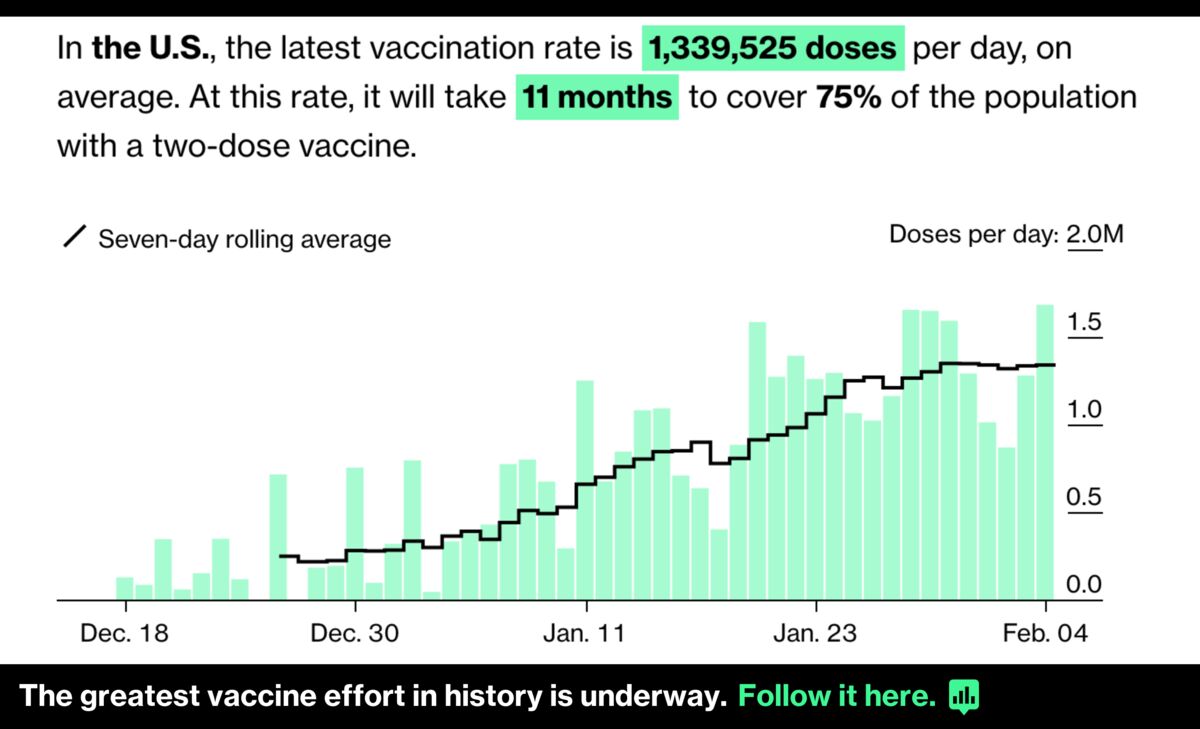When will the pandemic end? It’s the question hanging over just about everything since Covid-19 took over the world last year. The answer can be measured in vaccinations. Bloomberg has built the biggest database of Covid-19 shots given around the world, with more than 119 million doses administered worldwide. U.S. science officials such as Anthony Fauci have suggested it will take 70% to 85% coverage of the population for things to return to normal. Bloomberg’s Vaccine Tracker shows that some countries are making far more rapid progress than others, using 75% coverage with a two-dose vaccine as a target.
Israel, the country with the highest vaccination rate in the world, is headed for 75% coverage in just two months. The U.S. will get there just in time to ring in the 2022 New Year (though North Dakota could get there six months sooner than Texas). With vaccinations happening more rapidly in richer Western countries than the rest of the globe, it will take the world as a whole seven years at the current pace.

Bloomberg’s calculator provides a snapshot in time, designed to put today’s vaccination rates into perspective. It uses the most recent rolling average of vaccinations, which means that as vaccination numbers pick up, the time needed to hit the 75% threshold will fall.
The pace is likely to accelerate further as more vaccines become available. Some of the world’s biggest vaccine-manufacturing hubs in India and Mexico are only just getting started. More than 8.5 billion doses of vaccine have been contracted by countries through more than 100 agreements tracked by Bloomberg. Only a third of countries have even begun their vaccination campaigns.
Path to Immunity
Years to inoculate 75% of the population with a two-dose vaccine at the current pace of shots given
Source: Bloomberg’s Covid-19 Vaccine Tracker
A Collective Defense
Vaccinations protect against Covid-19 within a few weeks of getting the shots. But if just a few people in a community get vaccinated, the virus can continue to spread unchecked. As more people get the vaccine, groups of people start to build a collective defense against the virus so that isolated sparks of infection burn out instead of spreading into an outbreak. The concept is known as herd immunity.
In the scientific community, there are conflicting definitions for when herd immunity is achieved. Is it when enough people are protected that it begins to have a measurable effect on the speed of transmission? That could begin well before 75% of people are fully vaccinated. Others define it as the point when outbreaks can no longer be sustained. For example, even if there’s a cluster of measles cases in an unvaccinated community, herd immunity prevents it from rippling across a country.
